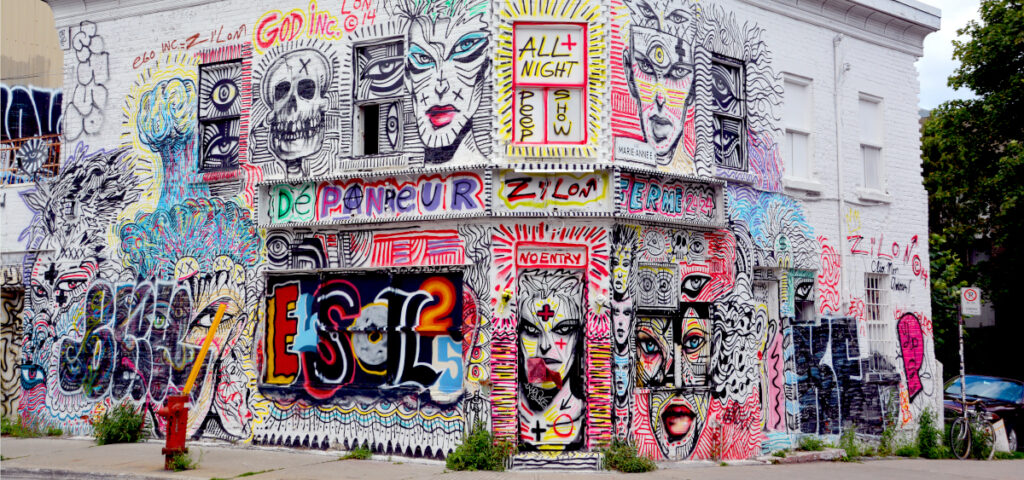When graffiti damages store windows, walls or public property, it can be considered a crime. In many large cities, including Montreal, Toronto, Calgary and Vancouver, owners must remove illegal graffiti from their property. Here’s a look at how art can become a crime.

Damaging property
Drawing graffiti can constitute the crime of mischief in our Criminal Code. A court must consider whether the artist knew that the graffiti would damage the private or public property in question (or, at least, did not care). If the court finds that the artist knew it would cause damage (or didn’t care), the court then looks at whether the graffiti did indeed cause damage.
Courts have also had to decide what constitutes “damage”. For example, writing with chalk on a sidewalk is not considered damage. Chalk markings can be easily erased. The use and value of the sidewalk are not affected.
Possible consequences
A court can order a defendant not to create new graffiti. It can also order them not to buy or possess permanent markers or aerosol paint cans. If the accused violates these conditions, they can face additional criminal charges for breach of conditions.
A person found guilty of mischief may get a criminal record and may have to pay fines or do community service. A prison sentence is unlikely for a first offence, but a court may be more severe with repeat offenders. Damage to property valued at less than $5000 carries a maximum prison term of two years. If the property’s value exceeds $5000, the maximum sentence is 10 years.
A court will consider the following in arriving at an appropriate sentence:
- whether the defendant has a criminal record,
- whether the message in the graffiti was hateful or offensive,
- the costs of cleaning, and
- the graffiti’s impact on the residents’ sense of security in the community in question.
Can graffiti be protected by copyright?
Yes. But to be protected by copyright, the graffiti must present a minimum degree of originality. Whether it was drawn legally or illegally does not matter. Once it’s been drawn, graffiti that meets the originality standard benefits from the Copyright Act’s protection.
Two rights may be in conflict: the rights of the property owner on the one hand and the protections of the Copyright Act on the other. If the graffiti was drawn illegally, there is no doubt that the property owner has the right to remove it. A graffiti artist who objected would have to go to civil court to plead their case.
|
Did you know? Many municipalities in Quebec provide walls where artists can legally draw graffiti. You can check with your city or town to find out where such walls are located and their opening hours. |





